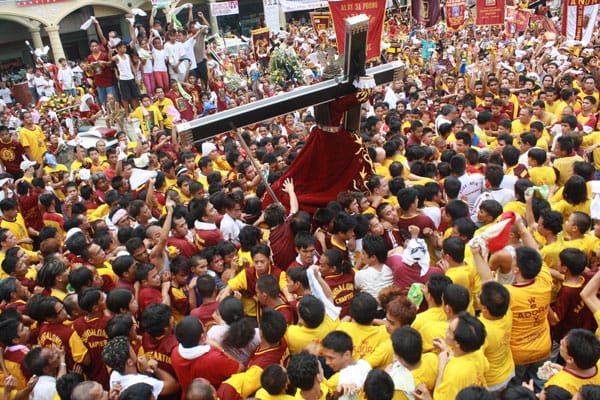The scene replays the fourth station of the Via Crucis, the traditional meeting of Mary with Jesus. It was a very brief scene, only 3 minutes within a procession that this year lasted for 18 hours. However, for all those present, it was a most touching moment.
The news agency of the Bishops’ Conference of the Philippines, CBCPNews, reports that the “Dungaw” has meant a recognition of the Augustinian Recollects. They have been for centuries the guardians of these two images that are so much loved by the Filipinos. Both are of Mexican origin, and from Mexico they sailed in the Manila Galleon early in the 17th century. The Nazarene arrived together with the first Recollects, in 1606, and settled with them in their first Manila convent of San Juan de Bagumbayan. Already in 1621, the archbishop of Manila attested to the existence of a confraternity of Nuestro Padre Jesús Nazareno in the Recollect convent. The image of Our Lady of Mount Carmel, for its part, arrived in the Philippines in 1618, with the third batch of missionaries. It was a gift given to them, in their passage through Mexico City, by the Discalced Carmelite nuns of the monastery of Saint Joseph. From her shrine in the basilica of San Sebastian, the cult and devotion to Our Lady of Mount Carmel spread to the whole country since centuries ago.
Massive procession
At present, the image of Nuestro Padre Jesús Nazareno is venerated in the church of Quiapo, the very barrio in old Manila where San Sebastian belongs. It is known as the “Black Nazarene”, because of its dark color, which is attributed to a fire that almost destroyed the ship that transported it. An image of the Lord carrying the cross, it inspires such a strong devotion among the faithful. On its feastday, 9th of January, the devotees flock in the hundred thousands, many of them barefoot and penitent. The massive crowds and the intensity of the devotees have, in not a few occasions, resulted in deaths by suffocation or crushing, a sad occurrence in events of popular religiosity.


